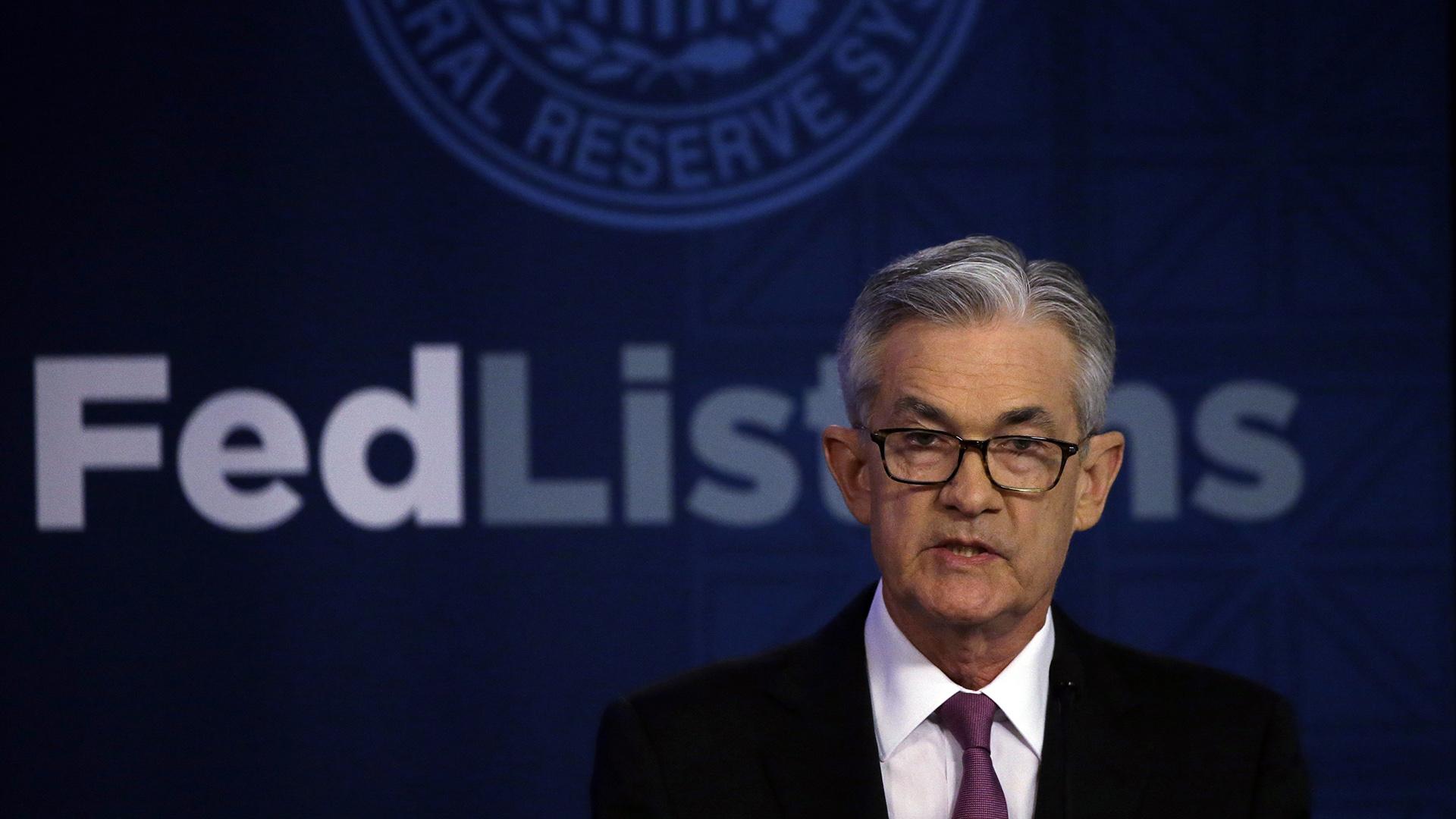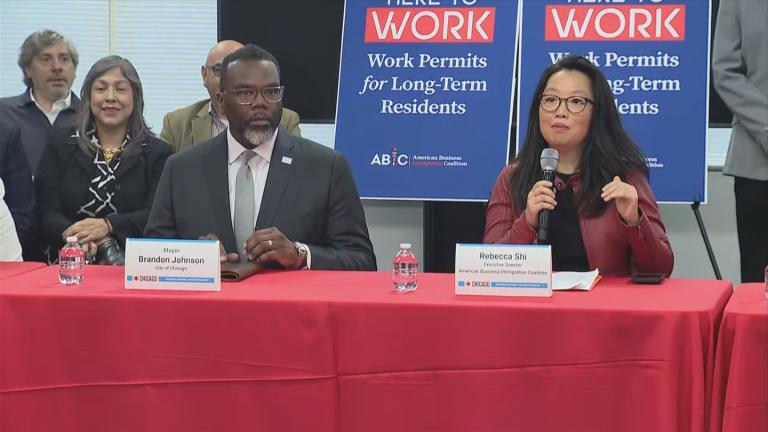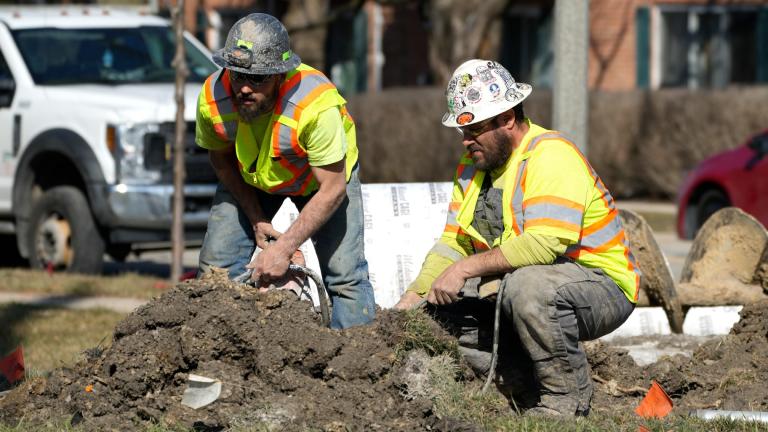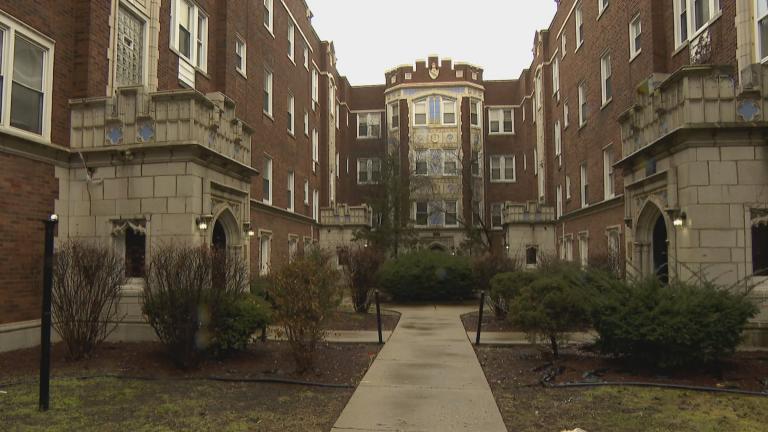 Federal Reserve Chairman Jerome Powell speaks Tuesday, June 4, 2019 at a conference involving its review of its interest-rate policy strategy and communications in Chicago. (AP Photo / Kiichiro Sato)
Federal Reserve Chairman Jerome Powell speaks Tuesday, June 4, 2019 at a conference involving its review of its interest-rate policy strategy and communications in Chicago. (AP Photo / Kiichiro Sato)
WASHINGTON (AP) — Chairman Jerome Powell said Tuesday that the Federal Reserve is prepared to respond if it decides the Trump administration’s trade conflicts are threatening the U.S. economy. Investors read his remarks as a signal that the Fed will likely cut interest rates later this year.
Stock prices jumped after Powell spoke, and the Dow Jones Industrial Average was up more than 400 points in afternoon trading.
Speaking at a Fed conference in Chicago, Powell said, “We are closely monitoring the implications of these developments for the U.S. economic outlook and, as always, we will act as appropriate to sustain the expansion.”
Powell didn’t explicitly say what the Fed would do. But expectations are rising that the Fed will cut rates at least once and possibly two or more times before year’s end, in part because of the consequences of the trade war. There is concern that the U.S. expansion, which next month will become the longest on record, could face growing risks of a recession as retaliatory tariffs weaken U.S. exports.
Investors in the futures market are pricing in a 59% chance of a Fed rate cut by July.
Also Tuesday, Vice Chairman Richard Clarida declined to speculate on the possibility of a Fed rate cut that soon but said in an interview with CNBC, “We will put in policies that need to be in place” to sustain the economic expansion.
Charles Evans, head of the Fed’s Chicago regional bank, said in a separate CNBC interview, “There’s the capacity to adjust policy if that’s necessary.”
James Bullard, head of the Fed's St. Louis bank, had said on Monday that a Fed rate cut “may be warranted soon,” in part because potential risks from trade uncertainties.
Trump has imposed far-reaching tariffs on imports on China, which has retaliated with tariffs of its own on U.S. exports. He has also threatened to impose an escalating series of tariffs against Mexico unless it stops a flow of migrants from Central America into the U.S. At a news conference in London, President Donald Trump reiterated that his import taxes on Mexican goods will take effect next week at a level of 5%, rising to a peak of 25% until Mexico complies with his demand to cut off Central America migration.
The Fed conference in Chicago is focused on how the central bank can make its rate policy more effective at a time when inflation has remained chronically below the Fed’s target level. In his remarks, Powell called persistently low inflation the “pre-eminent monetary policy challenge of our time,” because it limits the Fed’s ability to support the economy by cutting rates.
Powell said that in its first-ever public review of its operations, the Fed will aim to improve its rate strategies, the tools it uses to achieve its objectives and the way it communicates its actions to the public.
Next month, the economic expansion will become the longest period of uninterrupted growth on record, surpassing the 10-year expansion of the 1990s.
The Fed manages interest rates to achieve two goals: maximum employment and stable prices. Even though unemployment has reached a 50-year low of 3.6 percent, inflation has failed to rise to the Fed’s target of 2%. The Fed regards that target as the optimal level for annual price increases and becomes concerned if inflation stray too far above 2% or too far below it.
But the Fed’s efforts to achieve the 2% target have so far failed even though it kept its key policy rate at a record low near zero for seven years. It began gradually increasing its policy rate in 2015.
After raising rates nine times, it declared in January that it would be “patient” in raising rates further. The policy rate at the moment is in a range of just 2.25% to 2.5%, meaning that the Fed has less room than usual to cut rates to stimulate growth.
What the central bank can do to manage the economy when inflation is so low and rates have little maneuvering room will be a key topic at the two-day conference.
“Our obligation to the public we serve is to take those measures now that will put us in the best position to deal with our next encounter with the ELB,” Powell said, referring to the “effective lower bound” for interest rates — essentially, zero.
“With the economy growing, unemployment low and inflation low and stable, this is the right time to engage the public broadly on these topics,” Powell said.
In addition to the Chicago conference, the Fed is holding listening sessions around the country to gather public comments. Powell said that after this outreach, Fed officials will begin using their regular meetings to discuss possible changes.
Related stories:
Trade War, Heavy Rains Weigh on Deere & Co.
The Escalating Trade War, and What it May Mean for US Consumers
Chinese Trade Negotiators Head to Washington After Trump’s Tariff Threats
US Chamber: $3.8 Billion Worth of Illinois Goods Threatened by Trade War








